You'll be surprised by the traits we share with these shaggy red-haired great apes, our closest relatives in the world
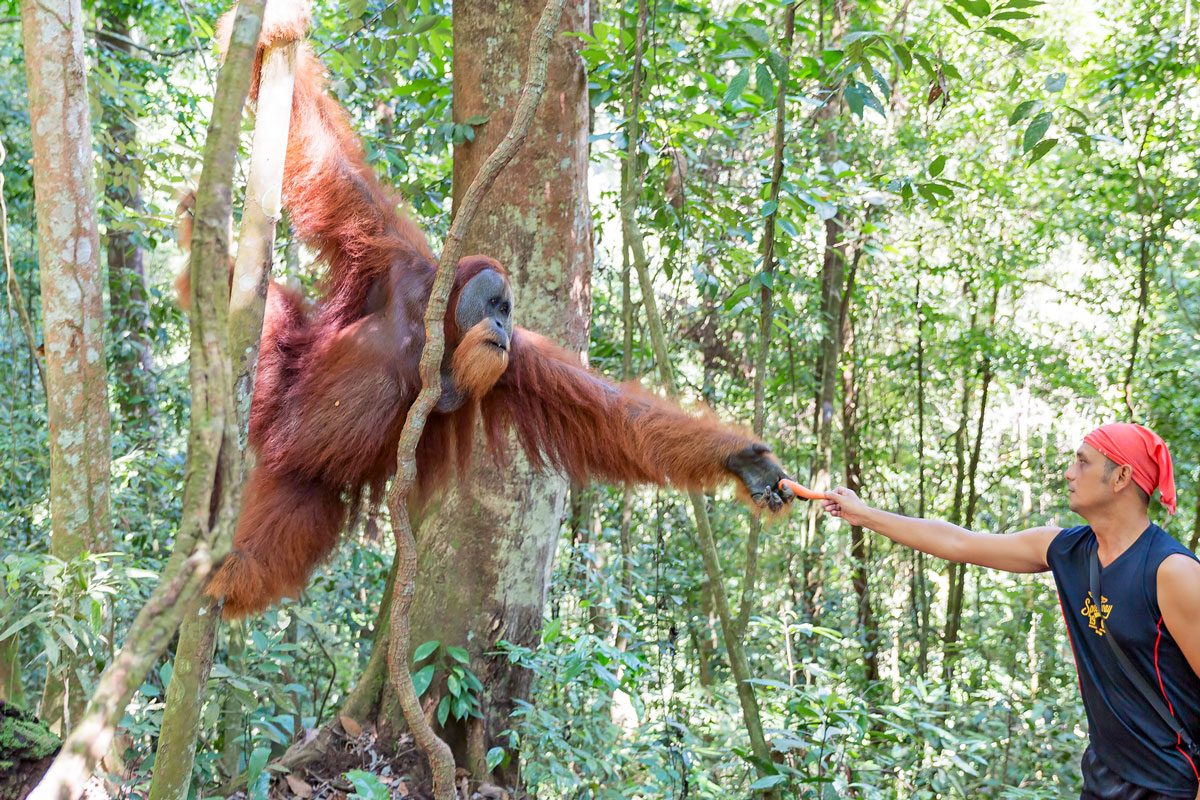
12 Surprising Ways Orangutans and Humans Are Alike

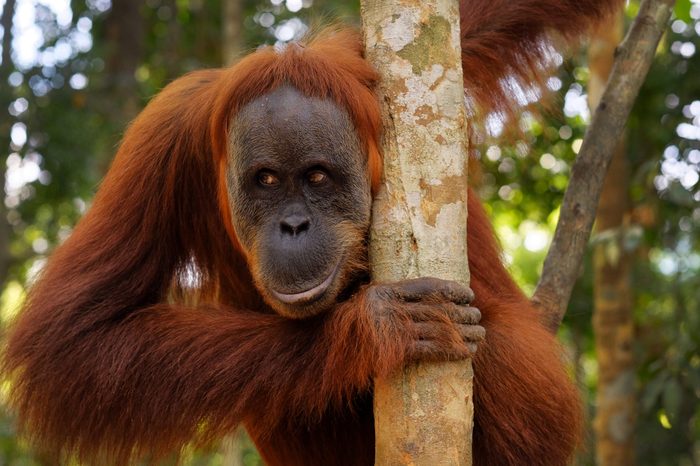
They have a hairline
In many cases, it’s the physical traits, rather than the strictly genetic ones, that researchers say link orangutans so closely to humans. One of those traits? “Humans and orangutans actually have a hairline,” Jeffrey H. Schwartz, co-author of a paper on the connections between us, told National Geographic. That’s a stark contrast to virtually all other primates, which have a more gradual transition and less of a distinct stopping point where the face starts. That shared feature reflects signs of evolution we have in common with our ape cousins.
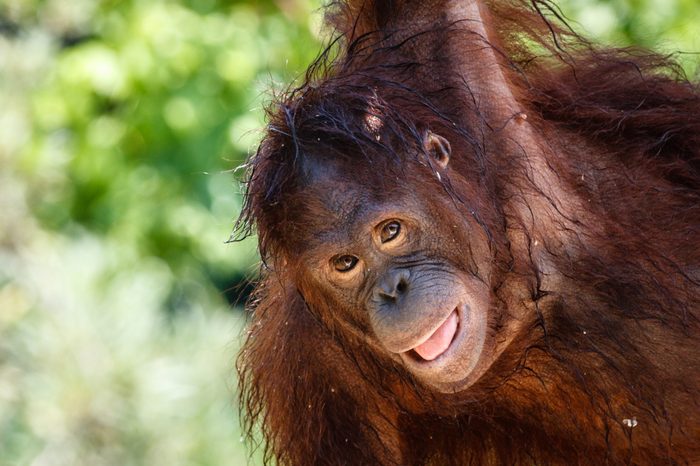
They have similar mouth features
Orangutans share at least 28 physical traits with humans. That’s 26 more than chimps and 21 more than gorillas. A couple of these similar traits are inside our mouths: We’ve both got flat molars that are covered with a thick layer of enamel. Another interesting orangutan and human similarity? “A hole in the roof of the mouth that was supposedly unique to humans is also present in orangs,” according to Schwartz.
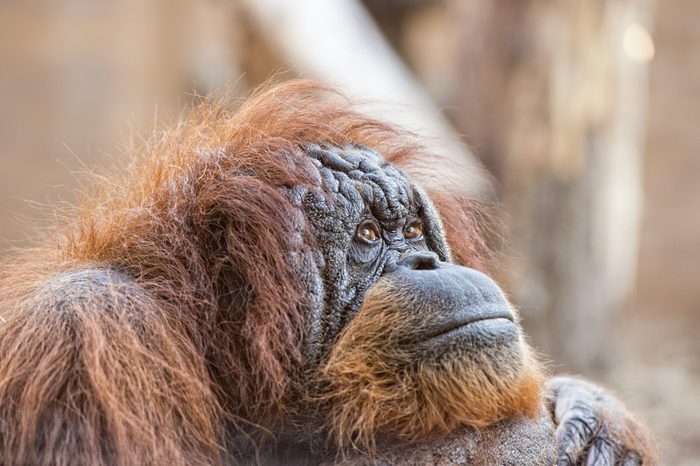
We suffer from similar signs of aging
Orangutans, as well as other great apes, often have overlapping signs of aging and disease pathology, according to a study published in Veterinary Pathology. Humans live longer than all other great apes, but other than that, we suffer from the same common signs of aging, including tooth, bone and muscle mass loss; sensory impairment; cardiovascular disease; hair loss and graying; frailty; and arthritis, a condition that can take on 100 different forms in humans.
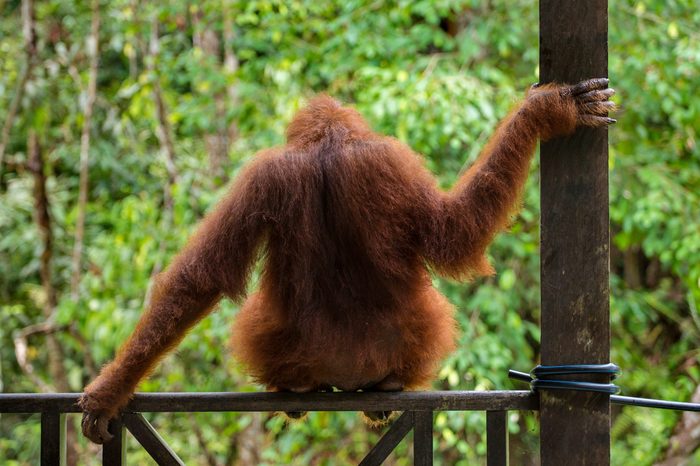
They have greater brain asymmetry than previously thought
According to research cited by New Scientist, orangutans have greater asymmetry between the right and left hemispheres of their brains than previously thought. Science once assumed that humans were the only primate to have specialized brain hemispheres, but research by the Max Planck Institute for Evolutionary Anthropology in Germany found that great apes also share this evolutionary variation, though it’s less pronounced in chimpanzees.
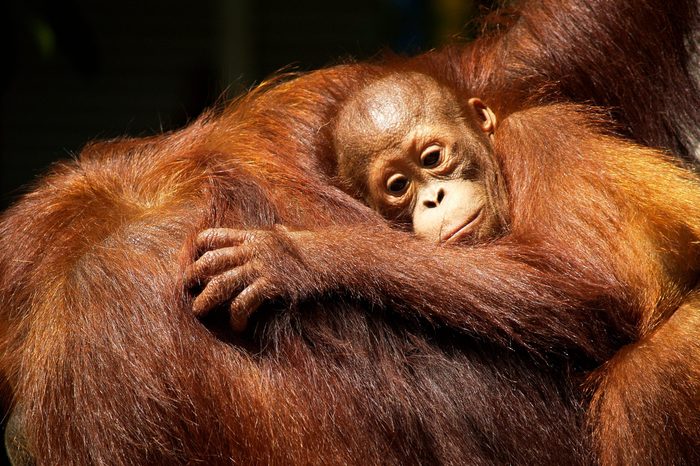
They bond with Mom
Orangutans’ strong bond with their mothers is rivaled only by humans. According to the Orangutan Foundation International, primatologists think these animals have long “childhoods” because, like humans, they need to learn so much before they can live alone. Juvenile orangutans hang with mom till they’re about 8 years old and nurse for pretty much the whole time.
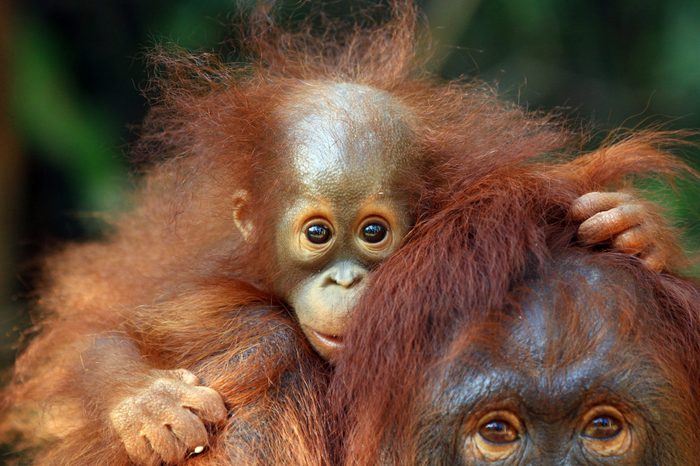
We share signs of pregnancy
Cheryl Knott, a biological anthropologist who studies orangutans in Gunung Palung National Park in Indonesia, made her own startling discovery about the similarities between humans and these shaggy red-haired great apes. Orangutans and humans “are so similar that Knott can use standard drugstore test kits on urine from female orangutans to determine whether they’re pregnant,” reported National Geographic.
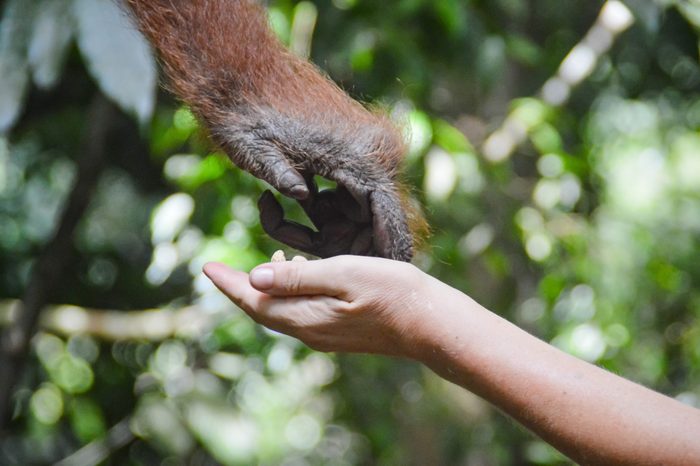
We have a common ancestor
One of the most controversial things Schwartz and his fellow researcher, John Grehan, concluded in their study was that humans and orangutans share a common ancestor that is not shared with other great apes. “We infer that the human–orangutan common ancestor had established a widespread distribution by at least 13 Ma [mega annum, or million years],” Schwartz and Grehan wrote.
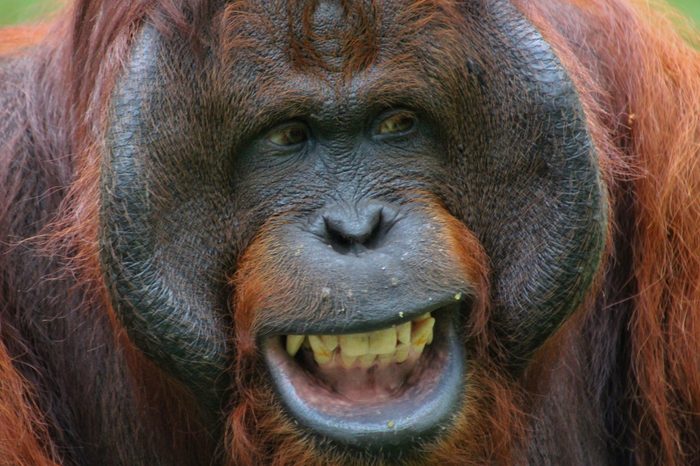
We laugh
“Perhaps the most humanlike behavior is the laughing by apes when they are being tickled,” Frans de Waal, a behavioral biologist and ethologist at Emory University, told Live Science. “It is low pitched compared to human laughter, but the facial expression and the waxing and waning of the laughing sounds are eerily human, to the point that those of us familiar with these vocalizations cannot stop ourselves from laughing too.”
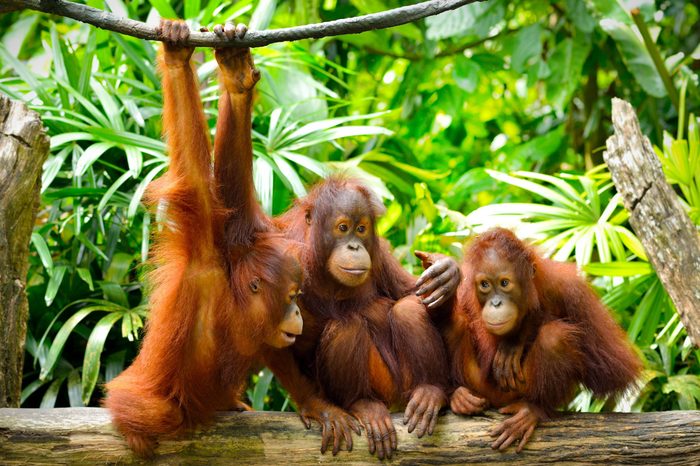
They can recognize faces
Actually, this is not a trait that’s specific to orangutans, or to great apes; even sheep, cows and dogs can recognize one another’s—as well as humans’—faces. But since these other animals are all social, and orangutans are largely solitary creatures, the ability takes on special poignancy and scientific relevance, especially when considered in conjunction with the fact that orangutans can also recognize faces they last saw long ago, according to research published in PLOS One.
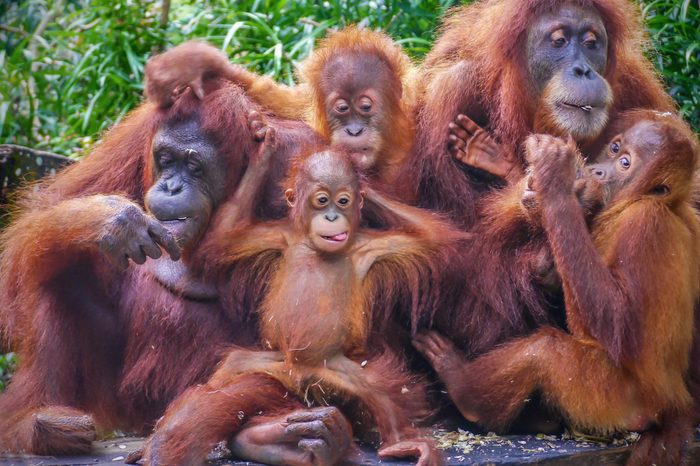
They “talk” about the past
Recent findings suggest that orangutans can recall their history. As Science magazine reports, “When wild orangutans spot a predator, they let out a loud ‘kiss-squeak,’ a call that sounds like a human smooching.” It’s not just a sign of recognition. “That noise tells tigers and other enemies, ‘I’ve seen you,’ scientists believe, and it also lets other orangutans know danger is near.” Researchers also reported hearing orangutans making this call after the threat was over, which suggests that it’s not just humans who can “talk” about the past.
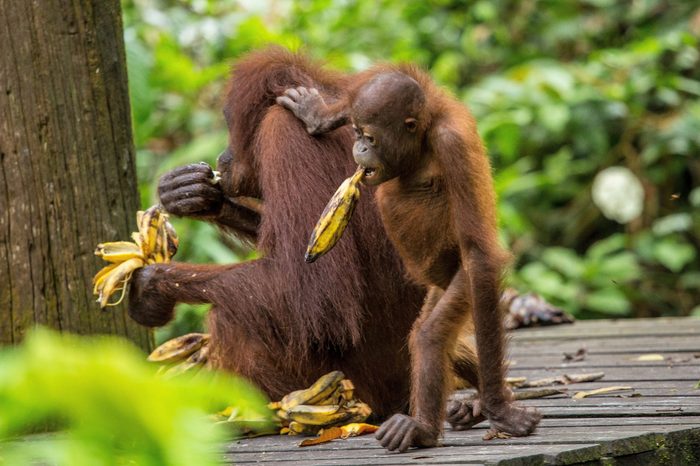
They learn from each other
It wasn’t so long ago that humans believed we were the only species that taught each other things that related to our own specific experiences. Not so, according to Orangutan Foundation International. In fact, orangutan populations in Borneo “use handfuls of leaves as napkins to wipe their chins, while orangutans in parts of Sumatra use leaves as gloves, helping them handle spiny fruits and branches, or as seat cushions in spiny trees.”
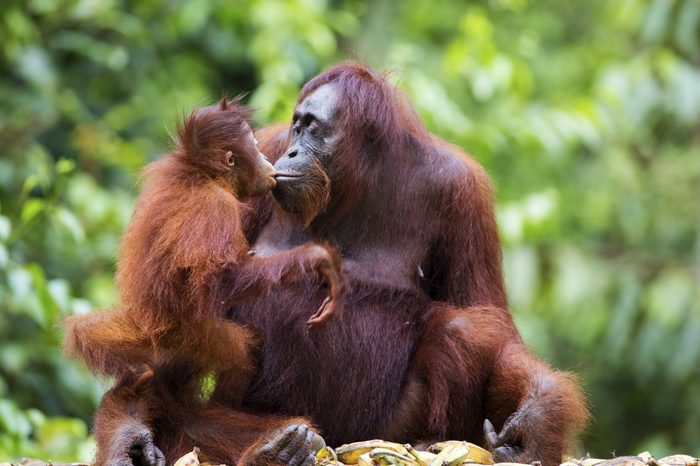
They pass that learning on to the next generation
Social learning that gets passed down through multiple generations is a building block of culture, and this trait has long been considered unique to humans. But according to research published in Current Biology, researchers concluded that geographical variations in orangutan behavior could be attributed to orangutans passing their social knowledge down through generations instead of primarily through genetic or environmental influences.
Why trust us
At Reader’s Digest, we’re committed to producing high-quality content by writers with expertise and experience in their field in consultation with relevant, qualified experts. We rely on reputable primary sources, including government and professional organizations and academic institutions as well as our writers’ personal experiences where appropriate. We verify all facts and data, back them with credible sourcing and revisit them over time to ensure they remain accurate and up to date. Read more about our team, our contributors and our editorial policies.
Sources:
- Sumatran Orangutan Society: “What Makes Us Human? New Research Unlocks Genetic Secrets”
- Veterinary Pathology: “Comparative Pathology of Aging Great Apes: Bonobos, Chimpanzees, Gorillas, and Orangutans”
- Orangutan Foundation International: “Orangutan behavior”
- Center for Great Apes: “About Apes”
- New Scientist: “Great ape brains have a feature that we thought was unique to humans”
- National Geographic: “Inside the Private Lives of Orangutans”
- Journal of Biogeography: “Evolution of the second orangutan: Phylogeny and biogeography of hominid origins”
- Live Science: “8 Human-Like Behaviors of Primates”
- PLOS One: “Orangutans (Pongo pygmaeus) Remember Old Acquaintances”
- Science: “Orangutans are the only great apes—besides humans—to ‘talk’ about the past”
- Wired: “Orangutan Culture Develops Like Human Culture”




















